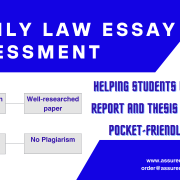Learning Outcomes Assessed:
LO1: Identify an appropriate research topic and formulate appropriate objectives
LO3: Produce a critical literature review and research methodology
LO4: Undertake primary research and critically appraise the results
LO5: Synthesise research findings and make informed judgements in the light of these
Assessment Brief:
Write a dissertation of 8000 words (±10%). Your dissertation is a structured report on the process and outcomes of a significant piece of independent research. In this you will examine the context of your research to provide motivation for your work; you will clarify the aims and objectives of your proposed research; demonstrate critical engagement with key areas of relevant literature, using this to develop an initial conceptual framework; you will present and justify the theoretical perspective underpinning your proposed research approach, contrasting this with alternative perspectives, and use this to inform the systematic development of your research design; you will present and discuss your findings and their implications, and consider the limitations of your proposed approach; you will also reflect on your contributions and to what extent your proposed objectives were met.
Dissertations follow a standard format; a proforma with guidelines, structure and formatting requirements will be available on Moodle. An indication of the main structure and contents is given below.
Minimum Secondary Research Source Requirements at Level HE6 (Dissertation): It is expected that the Reference List will contain thirty to fifty sources, with no fewer than twenty high quality journal articles.
Additional Submission Instructions:
You are required to submit a soft copy via “Turn-it-in UK” on the module Moodle page. The software will allow you to check your work against other material on the internet. It will also compare your work against other students work.
You will be able to upload drafts of your written work into turn-it-in as many times as you wish before the deadline.
You will not be able to overwrite the final submission after the deadline. You can only submit a single file.
Dissertation Presentation Guidelines
The following guidelines should be used in preparing your written document in order that all dissertations conform to a similar style and structure.
Length
The dissertation should be 8,000 words in length (excluding cover page, contents page, tables, figures, reference list and appendices).
Word Count. You are expected to revise and edit your dissertation to remain within +/- 10% of the allocated word limit for that piece of work. In order to ensure that word counts can easily be checked you should include:
A note of the word count, as performed by your word processing package, should be included in the dissertation. A deduction is made for all tables, figures, appendices and bibliography, which DO NOT count towards the overall word limit.
It is likely to be an exceptional piece of work that covers the dissertation requirements fully in much less than the set word countless 10%.
Structure of the Dissertation
The dissertation should follow the structure below:
• Title page
• Abstract
• Acknowledgements
• Glossary
• Contents page
• List of tables
• List of figures
• List of appendices
• Introduction
• Literature Review
• Methodology
• Findings and Analysis
• Conclusions and Recommendations
• References
• Word count
• Appendices
Title Page
This should be presented in the following manner:
BSc (Hons) Business Management
DISSERTATION TITLE
STUDENT’S NAME
STUDENT’S NUMBER
BAM6001 DISSERTATION
Supervisor: NAME
The front page should create an accurate impression of the content of the dissertation. The dissertation title should communicate concisely the main thrust of the work. It can be followed by a longer clarification of the area investigated. For example, the title may be:
MOTIVATING EMPLOYEES
A Case Study of job satisfaction in Bank X in London
Abstract
This is a summary of about 250-500 words which describes the issue under investigation and the aims of the study. It should also briefly identify the main conclusions and recommendations. It should be no longer than one page.
Acknowledgements
This is a brief summary of the people and organisations you may wish to thank.
Glossary
Explain any key terms employed.
Contents Page
This should show the reader how the report is structured and how the author has developed their approach to the problem. The contents page should be presented in the following manner:
CONTENTS
CHAPTER Page
Abstract i
Acknowledgement ii
Glossary iii
List of Figures
List of Tables where applicable iv
List of Appendices
1 INTRODUCTION 1
2 LITERATURE REVIEW3
3 METHODOLOGY 13
4FINDINGS AND ANALYSIS 20
5 CONCLUSIONS AND RECOMMENDATIONS 35
BIBLIOGRAPHY 40
WORD COUNT 45
APPENDICES 46
List of Tables, Figures and Appendices
It is likely throughout the dissertation that you will want to use tables or diagrams to present information. If these are directly related to your arguments it is better to include them in the main body, rather than the appendices. In such cases, it is conventional to provide a special “contents page” – List of Figures/List of Tables – which identify clearly where tables and figures are located.
List of Tables
Page
Table 1. Motivational factors for employees 38
Table 2. Motivational factors for managers 40
Moreover, when you have more than one Appendix, you should include a special “contents page” listing all the Appendices.
Introduction
The introduction should set the context and tone for the rest of the dissertation. You should outline the reasons giving rise to the problem or issue to be identified. It should give a broad introduction to the topic under review and the issues raised. The main point is to set clear objective(s) that you are seeking to achieve by the end of the dissertation report, which should be relatively concise and precise.
Literature Review
The review should examine the relevant literature and develop a conceptual and theoretical framework, based on models and theories, which will be used to analyse the topic under investigation. It should also involve a synthesis and a critical evaluation of current knowledge and background material on the topic being explored. Information from textbooks, academic and industry journals, newspapers and organisational documentation should be discussed, compared and contrasted in a structured and critical manner. Write selectively and focus on what is directly related to your topic. The review may consist of a number of sections or subsections.
Methodology
This section should provide a critical discussion of the research methods and approaches considered and your rationale for the research design developed. The issue of triangulation and validity in the research design need to be covered in detail together with a critical discussion and evaluation of the design framework. Any limitations in the research design that emerged from the investigation should be acknowledged. The methodology should provide sufficient detail to allow your supervisor to assess the reliability and validity of your methods.
Findings and Analysis
In this section the results of your primary research should be presented and analysed, in a clear and concise manner. You will need to determine the key elements of your study and structure your results accordingly (it is not appropriate to simply list responses to questionnaires/interviews in question order). Your analysis and evaluation of data should be clearly linked to and supported by the academic concepts discussed in your literature review. This section may include tables (numerical information), figures (qualitative responses, graphs, charts) and photographs to illustrate points.
Conclusions and Recommendations
Your conclusions should naturally flow from your discussion and analysis of your findings. The conclusions should include a summary of your main findings which can be brought to bear on the defined objectives of the study. You should also include a discussion about the alternative courses of action available and their feasibility, desirability and acceptability to the organisation. Your conclusions need to be referenced back to your Literature Review and Findings and Analysis. The recommendations should emerge from the conclusions and should be feasible and practical: where costs are likely to be incurred, there needs to be a justification of the likely benefits. In addition, you need to consider and identify the possible human, political and managerial implications of any recommendations. This section should not introduce new material.
Reference List
References must be Harvard style. Guidance is available at
http://www.bolton.ac.uk/bissto/Finding-Information/Referencing/Home.aspx
Word count
This is a word-processed count of all words from the Introduction to the Recommendations (excluding tables, figures).
Appendices
In your appendices you should include:
• A blank copy of your Questionnaire or Interview Questions
• A small sample of completed Questionnaires (up to 5)
• Tables of raw data
• Additional information which provides support to the discussion in the main body of the Dissertation Report
Appendices should be numbered and given titles, which indicate their content and be clearly referenced in the main body of the Report.
NOTE: You must keep all of your research materials (questionnaires etc). They may be requested by your supervisor, moderator and/or external examiner.
NOTE: Where information contained in a report is considered to be confidential to your employer, arrangements can be made to restrict access to a dissertation.










